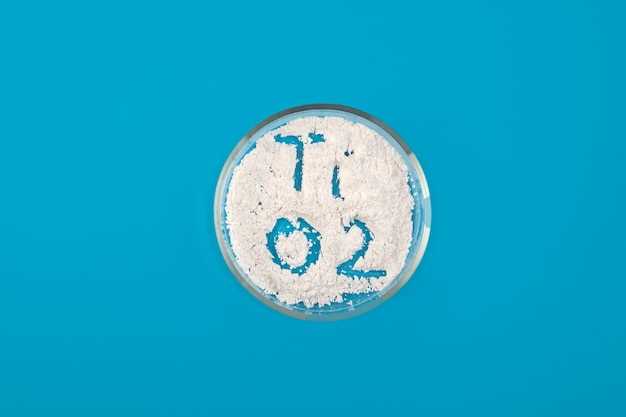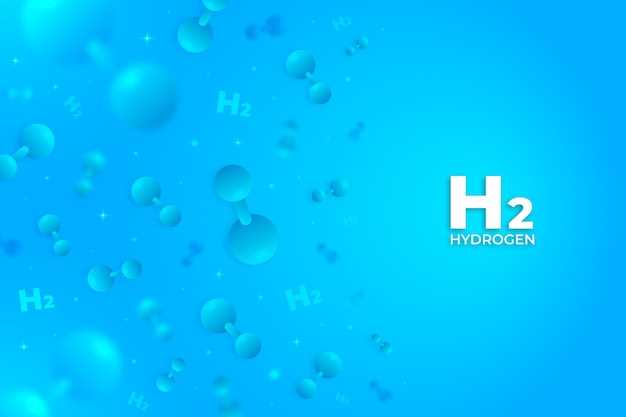
Discover the power of Hydroxyzine Hydrochloride!
Are you looking for a reliable solution to manage anxiety, allergies, or insomnia? Look no further than Hydroxyzine Hydrochloride – the ultimate game-changer in the world of medication!
Hydroxyzine Hydrochloride MSDS (Material Safety Data Sheet) is a comprehensive document that provides essential information about the chemical composition, physical properties, and potential hazards of this incredible product. Our dedicated team of experts has meticulously analyzed and compiled all the necessary data to ensure your complete safety and peace of mind.
Why choose Hydroxyzine Hydrochloride?
1. Effective Anxiety Relief: Hydroxyzine Hydrochloride is known for its remarkable anti-anxiety properties. It helps calm your mind and reduce anxiety-related symptoms, allowing you to regain control over your life.
2. Allergy Management: If you’re tired of hay fever or other allergic reactions ruining your day, Hydroxyzine Hydrochloride is here to save the day! It effectively alleviates allergy symptoms and provides long-lasting relief.
3. Quality Sleep: Say goodbye to sleepless nights with Hydroxyzine Hydrochloride! This powerful medication not only helps you fall asleep faster but also improves the quality of your sleep, leaving you refreshed and energized every morning.
Don’t settle for mediocre solutions when it comes to your health and well-being. Choose Hydroxyzine Hydrochloride, the ultimate game-changer that guarantees results!
What is Hydroxyzine Hydrochloride MSDS?
Hydroxyzine Hydrochloride is an antihistamine used to treat itching caused by allergies. It works by blocking a certain natural substance (histamine) that your body makes during an allergic reaction. Hydroxyzine hydrochloride MSDS provides important information about the chemical composition and potential hazards associated with this medication.
Section 1: Product Identification
In this section, Hydroxyzine Hydrochloride MSDS provides detailed information about the product, including its name, chemical formula, CAS number, and supplier information. This helps identify the specific product and ensure proper handling and storage.
Section 2: Hazards Identification
This section outlines the potential hazards associated with Hydroxyzine Hydrochloride, such as its flammability, toxicity, and environmental impact. It also provides information on proper safety precautions to minimize these hazards.
Section 3: Composition / Information on Ingredients
This section lists the chemical composition of Hydroxyzine Hydrochloride, including its active and inactive ingredients. It provides information on the concentration of each ingredient and any potential hazards associated with them.
Section 4: First-Aid Measures
In this section, Hydroxyzine Hydrochloride MSDS provides instructions on how to handle and administer first aid in case of exposure or ingestion of the medication. It outlines the symptoms of overdose or allergic reaction and provides guidance on seeking medical attention.
Section 5: Fire-Fighting Measures
This section provides instructions on how to handle and extinguish fires involving Hydroxyzine Hydrochloride. It outlines the appropriate firefighting equipment and techniques to use and highlights any potential hazards associated with firefighting.
Section 6: Accidental Release Measures
In this section, Hydroxyzine Hydrochloride MSDS provides guidelines on how to handle accidental spills or releases of the medication. It outlines appropriate safety measures to take and procedures for containing and cleaning up the spill to minimize exposure and environmental impact.
Section 4: Hazards Identification
Hydroxyzine hydrochloride is classified as harmful if swallowed, causing skin irritation and serious eye damage. It may cause respiratory irritation, drowsiness, and dizziness. Prolonged or repeated exposure may cause allergic skin reactions. Hydroxyzine hydrochloride is also harmful to aquatic life with long-lasting effects.
Hazard Statements:
Harmful if swallowed.
Causes skin irritation.
Causes serious eye damage.
May cause respiratory irritation.
May cause drowsiness or dizziness.
May cause an allergic skin reaction.
Harmful to aquatic life with long-lasting effects.
Precautionary Statements:

Keep out of reach of children.
IF SWALLOWED: Call a POISON CENTER or doctor/physician if you feel unwell.
IF ON SKIN: Wash with plenty of soap and water.
IF IN EYES: Rinse cautiously with water for several minutes. Remove contact lenses, if present and easy to do. Continue rinsing.
If experiencing respiratory symptoms, remove to fresh air and seek medical attention.
Use personal protective equipment as required.
Dispose of contents/container in accordance with local/regional/national/international regulations.
Do not release into the environment.
Avoid breathing dust/fume/gas/mist/vapours/spray.
Wear protective gloves/protective clothing/eye protection/face protection.
Section 5: Hazards Identification
Hydroxyzine hydrochloride is a medication used to treat allergies and anxiety. It is important to be aware of the potential hazards associated with its use. Some individuals may be allergic to hydroxyzine hydrochloride and can experience severe allergic reactions, such as difficulty breathing, swelling of the face or throat, and hives. If you experience any of these symptoms, it is important to seek medical attention immediately.
In addition, hydroxyzine hydrochloride may cause drowsiness and impair your ability to operate heavy machinery or drive a vehicle. It is important to avoid activities that require mental alertness until you know how hydroxyzine hydrochloride affects you.
It is also worth noting that hydroxyzine hydrochloride may interact with other medications, including certain antidepressants and sedatives, and can increase the risk of side effects. It is important to inform your healthcare provider about all medications you are taking to prevent any potential drug interactions.
Overall, while hydroxyzine hydrochloride is a safe and effective medication when used as directed, it is important to be aware of the potential hazards associated with its use. Always follow the instructions provided by your healthcare provider and consult them if you have any questions or concerns.
Section 6: First-Aid Measures
It is important to have knowledge of first-aid measures in case of any potential hazards or accidents related to the use of Hydroxyzine hydrochloride. The following information provides guidelines on how to address different situations:
Inhalation:
- Move the affected person to fresh air immediately.
- If breathing difficulties persist, seek medical attention.
Skin Contact:
- Remove any contaminated clothing and rinse the affected area with plenty of water.
- Do not use hot water, as it may further irritate the skin.
- If skin irritation or rash develops, seek medical advice.
Eye Contact:
- Rinse the eyes gently with water for at least 15 minutes.
- Remove contact lenses, if applicable, after rinsing for 5 minutes.
- Seek medical attention if eye irritation persists.
Ingestion:
- Do not induce vomiting unless instructed to do so by medical personnel.
- Rinse the mouth with water and give small sips of water to the affected person.
- Seek immediate medical attention or contact a poison control center.
Note: It is crucial to provide medical personnel with all relevant information, including the product name (Hydroxyzine hydrochloride) and its MSDS, to ensure appropriate treatment.
Section 7: Fire-Fighting Measures
Fire hazards:
- The product is not flammable.
Extinguishing media:
- Use water spray, fog, or foam to extinguish fires.
- Use carbon dioxide (CO2) or dry chemical powder for small fires.
Special firefighting procedures:
- Wear protective clothing and self-contained breathing apparatus (SCBA) to prevent contact with skin and inhalation of fumes.
- Evacuate the area and fight the fire from a safe distance if the fire is uncontrollable.
Unusual fire and explosion hazards:
- The product may release toxic fumes or gases when heated or exposed to fire.
Additional information:
- Cool containers with water spray to prevent rupture or explosion.
- Prevent runoff from entering sewers or water sources.
Section 5: Fire-Fighting Measures
In case of fire, use a fire extinguisher suitable for the surrounding materials. Water spray may be used to cool containers and structures exposed to heat, but should not be used as a direct fire-fighting agent. Carbon dioxide (CO2) or dry chemical extinguishing agents may also be used.
Avoid breathing the smoke generated from burning hydroxyzine hydrochloride. Evacuate the area and ensure proper ventilation to minimize exposure. Firefighters should wear full protective clothing and self-contained breathing apparatus.
If the fire has reached containers or storage areas, evacuate the immediate vicinity and contact the appropriate authorities. Do not attempt to extinguish the fire if the risk is beyond your capabilities or if it endangers your personal safety.
It is important to have an emergency action plan in place and ensure all employees are trained on the proper procedures in the event of a fire. Regular fire drills and inspections should be conducted to maintain a safe working environment.
Section 6: Accidental Release Measures

It is important to take necessary precautions when dealing with accidental release of Hydroxyzine hydrochloride. Follow these steps to ensure safety:
1. Personal precautions:
Safely evacuate the area and take appropriate measures to protect yourself from exposure to the substance. Wear suitable protective clothing, gloves, and eye/face protection.
2. Environmental precautions:
Avoid release to the environment. Prevent the substance from entering drains, water sources, or soil. Contain the spill and prevent it from spreading.
3. Cleanup methods:
Contain the spilled substance using suitable materials such as absorbent material or sand. Scoop up the material and place it in a suitable container for disposal. Clean the affected area thoroughly with water and detergent.
4. Handling and storage:
Handle and store Hydroxyzine hydrochloride in accordance with the safety instructions provided in Section 7 of the Material Safety Data Sheet. Store in a cool, dry place away from sources of ignition and incompatible materials.
Follow these accidental release measures to minimize the risks associated with Hydroxyzine hydrochloride and ensure the safety of yourself and the environment.
